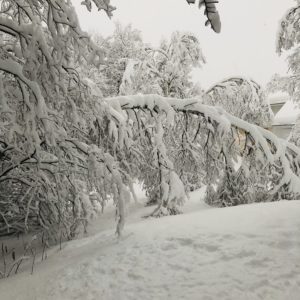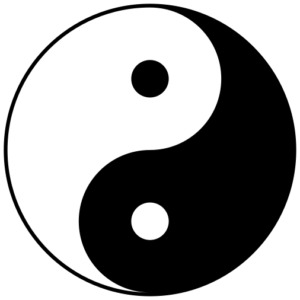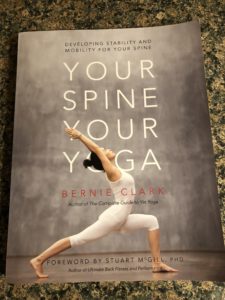An athlete, (and here I include anyone who strives for fitness and well-being), is familiar with words like energy, strength and courage – as well as concepts of power, force, endurance, patience, effort and performance.

Flexibility is another one. We make our plans, structure training and when something topples that structure, are required to become flexible in more ways than physical. For me, today was one of those days. Beautiful though it is, a heavy wet snowfall cancelled my work-day but gave me time to pursue studies.
As a student of the Summers School of Yin Yoga (https://joshsummers.net/school/), and, preparing for an upcoming week of training in “Mindfulness,” I am about halfway through reading Joseph Goldstein’s “Mindfulness, A Practical Guide to Awakening.” Often my study requires mental discipline. Sometimes I set a timer for one hour and force myself to persevere. Physically it is an effort to remain seated for that period of time and to exercise patience with myself. But the study stealthily creeps into my thinking and I find myself revisiting bits and pieces and, my favorite exercise, flip to the Index to pursue more pages about a word that has teased my interest. Ultimately I suppose I could say that my performance is enhanced and I am empowered to take the next step. Hmmmm.
This morning, after my timer had jingled, I hop-skipped-&-jumped through the citations pertaining to energy. So, let me ask you, have you ever deliberately connected these three words: ENERGY, STRENGTH & COURAGE? I guess on some level we have all assumed that they relate. However, let me share with you a few sentences of observation written by Goldstein who
suggests that “Energy (viriya, in Pali) is the root of all accomplishment….and is the capacity for activity, the power to do something. This energetic capacity, the power to do, manifests in a variety of ways.”
Strength, therefore, is the power to do, a “channeling of energy for the development of wholesome states of mind….” Courage, at first an unlikely companion to energy and strength, “powerfully energizes our heart as we walk on the path.” And here might be the crux of the matter: “Courage is energized by challenge; it is inspired by difficult tasks and even seeks them out. When courage is present, we rise to meet different challenges for the sake of what we want to accomplish, and we’re not discouraged by thoughts of hardship or by the length of the undertaking.”
We are all familiar with exhortations to play with our edge, move outside our comfort zone, achieve balance in all things, yadayadayada. But here is something we can sink our teeth into. Use energy purposefully – perhaps not as if driven, but as if seeking. Support our energetic endeavors with moral, mental and physical strength and perseverance. Utilize courage to embark, continue and perhaps complete. Rather than imposing limitations upon ourselves based on an inadequate assessment of what we are capable of, after choosing a course of action, do so with “qualities of interest, willingness, and the courage to explore. It is not a question of ‘should’ or right and wrong.”
Thankfully we are all students. There is so much to learn, ponder, process, practice and either embrace or discard as something that is not inherently bad, but as something that is no longer useful to us.
 This snow will melt. There will be more. Flexibility will always be needed. May we all have the energy, strength and courage to move with life’s changes and challenges in a way that is most beneficial to ourselves and others. May we all always be practicing students.
This snow will melt. There will be more. Flexibility will always be needed. May we all have the energy, strength and courage to move with life’s changes and challenges in a way that is most beneficial to ourselves and others. May we all always be practicing students.


 Bernie Clark, a leader in the field of Yin Yoga, (
Bernie Clark, a leader in the field of Yin Yoga, (